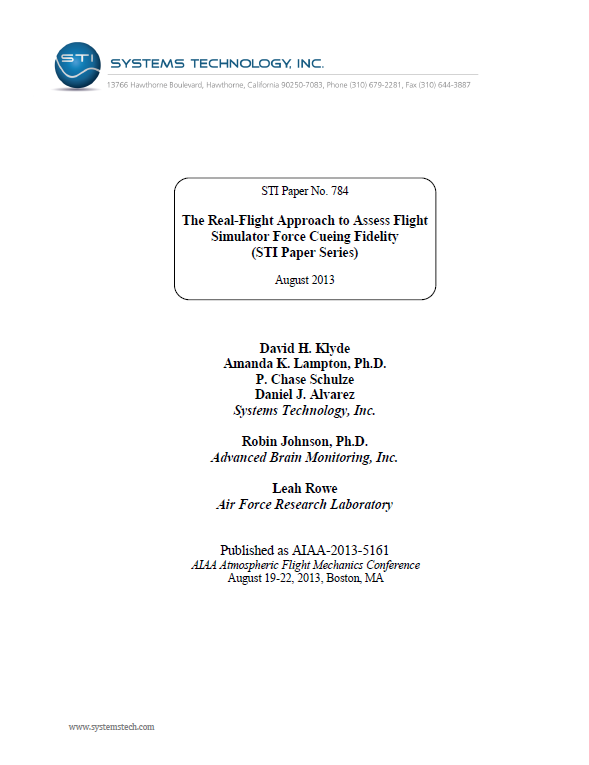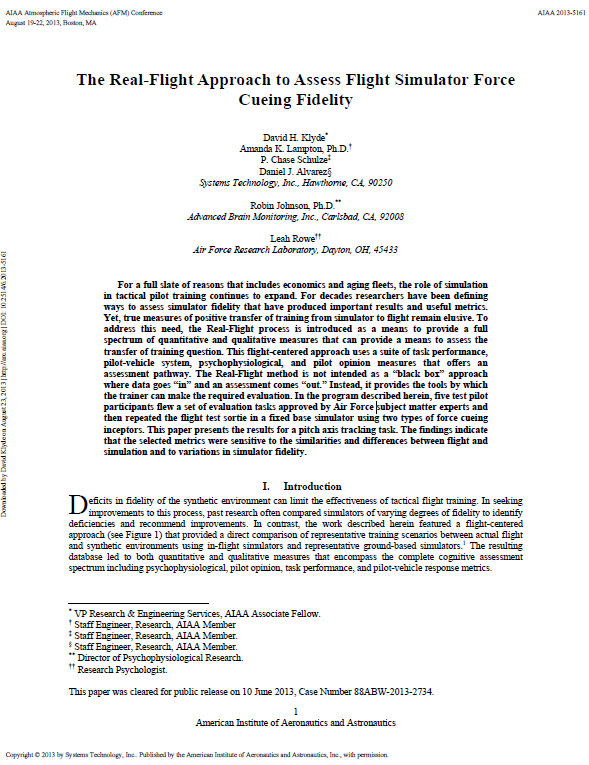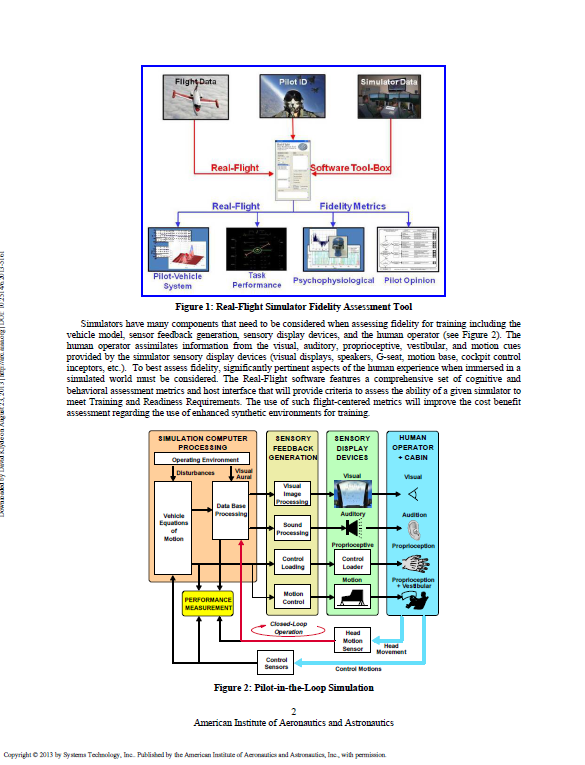
The Real-Flight Approach to Assess Flight Simulator Force Cueing Fidelity
For a full slate of reasons that includes economics and aging fleets, the role of simulation in tactical pilot training continues to expand. For decades researchers have been defining ways to assess simulator fidelity that have produced important results and useful metrics. Yet, true measures of positive transfer of training from simulator to flight remain elusive. To address this need, the Real-Flight process is introduced as a means to provide a full spectrum of quantitative and qualitative measures that can provide a means to assess the transfer of training question. This flight-centered approach uses a suite of task performance, pilot-vehicle system, psychophysiological, and pilot opinion measures that offers an assessment pathway.
Download Now

